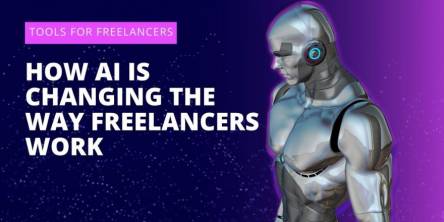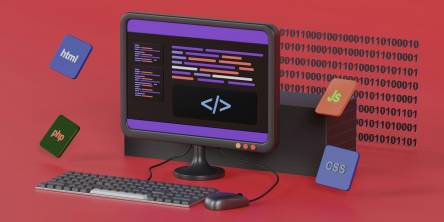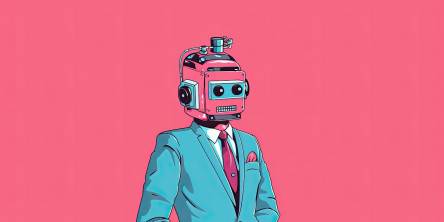Why Generative AI Is the Ultimate Innovation Partner for Product Teams

Generative AI is not just another addition to the toolbox of products; it will soon serve as the co-pilot for the entire lifecycle process, including discovery and delivery. New evidence indicates the pace at which this transformation is taking place: The 2025 State of AI by firm McKinsey notes that 71 percent of organizations deploy generative AI in one business capability or more, compared to 33 percent in the previous year, and that the uptake is no longer focused on IT application functions but is expanding to marketing, sales, and services operations.
Executive and investor interest is also picking up speed. According to Microsoft's 2025 Work Trend Index, 82 percent of leaders believe that 2025 is the right year to revise their strategy and redesign their operations with AI and Stanford 2025 AI Index reports how much money investors are spending on AI--including $33.9B privately invested in generative AI in 2024, increasing 18.7 per cent year on year. In the meantime, Gartner points to a boom in investment in domain-specific models, with a more-than-100 per cent increase in spending projected in 2025 when organisations would move beyond broad-based copilots to more specialised agents.
From idea to MVP, faster than your roadmap
Generative AI will reduce high-friction steps in the time it takes to develop a product:
- Discovery & insights: Summarise interviews, cluster pain points, and identify themes across qualitative/quantitative sources faster in minutes than days or weeks. Squads that formerly manually parsed feedback will be able to conduct ongoing exploration through AI-facilitated synthesis. According to McKinsey, organizations are applying AI to more functions than ever before, and that discovery work is becoming industrialized.
- Concept & prototyping: Develop micro copy UX, alternative versions of wires, and what-ifs depending on personas and edge instances. This generates additional candidate ideas and allows designers to make earlier tests of assumptions.
- Technical investigation: Sketch out scaffolding code, stubs of integration, and API tests to proof-of-concept. Architecture takes more time from engineers and less time for boilerplate.
Precision product-market fit with AI copilots
Gen AI is your 24/7 product pod analyst:
- Opportunity sizing: Convert pull market indicators, pricing benchmarks and competitor deltas into neat reports. Stanford AI Index indicates that the use of AI is associated with a shortened business analysis cycle, with investment in tools converting unstructured data into leverage.
- Persona-level messaging: Develop and A/B test value propositions at segmental levels and optimize according to the telemetry of engagement.
- Backlog triaging: Cards should be prioritized based on the estimated customer impact and effort, along with risk and an explanation of the link to evidence.
Design that scales and learns
Design systems are alive with generative systems:
- Scalable content: Personalise copy, design and provide empty-state advice, and generate assistance content that assists consistency requirements and accessibility regulations.
- Variant testing: generate on-brand UI variants in a scripted way and test them on synthetic end-users before running live experiments.
- Uniform enforcement: Insert policy checking into content and UI generation to minimize the rework later in the cycle.
Engineering acceleration without the tech debt
It is not the promise of doing less engineering but better engineering:
- AI code buddies: Let agents undertake unit tests, refactoring proposals, and dependency maintenance and leave the human brain power free to do the important design and performance work.
- Secure made simple: Model-gating, prompt sanitisation, PII redaction, policy enforcement tuned to your CI/CD to ensure that the code generated by AI passes your compliance test. According to the 2025 Hype Cycle by Gartner, spend is increasing, but many CEOs continue to demand more explicit ROI; governance-first implementations help to bridge that gap.
- Resilience & observability: treat such prompts, templates, and agents as versioned artefacts with telemetry, such that regressions are detected like any other code change.
AI-Native Product Operations (ProdOps)
Product ops change as usage scales:
Model lifecycle management: Monitor drift, bias and performance SLAs by feature.
Human-in-the-loop (HITL): Then send uncertain cases to reviewers; feed feedback on to the prompts and fine-tune.
Cost intelligence: Model attributes that set costs at the feature level and not simply on the apps, so that PMs can trade off accuracy vs. latency vs. spend.
Proving value: Metrics that matter
Link AI efforts to business results--not demonstrations:
- Time-to-insight: hours between user input and validated learning.
- Throughput: Quality gates passed along with the story points finished in the sprint.
- Experiment velocity: Experiments/week and decision cycle.
- Retention & NPS boost: Head-count effect of a segment associated with AI-powered experiences.
- Unit economics: contribution margin post model, infrastructure and review cost.
The 2025 Jobs Barometer released by PwC alludes to the fact that AI supplements, or rather empowers roles, together with skilling, to cause productivity and wage increases in the most automation-threatened jobs. That is when you should start measuring people + AI results, not raw automation.
Build or buy? A practical roadmap for product leaders
- Begin with a punchy use-case: Select one outcome (e.g. cut go off during onboarding by 15%). Broadside blanket requirements are stuck.
- Select an appropriate model for the task: Broad general-purpose LLMs; accuracy and efficiency in specific workflows that have regulatory or safety risks, which is another area where investment levels are soaring, notably with domain-specific models (DSLMs).
- Ship safely: Include red-team prompts, jailbreak tests, content filters and hallucination guards.
- Instrument everything: Log prompts and responses, latency, cost, thumbs-up/down, and downstream business metrics.
- Train the staff: Write an AI playbook to PMs, designers, and engineers; the Work Trend Index study by Microsoft notes an increased presence of human-agent teams - make people learn to manage and compose agents, as well as other resources.
Why partner with specialists, especially in Australia
Assuming you are expanding beyond proofs of concept or pilot projects, partnering with a Gen AI Development Company in Australia can help de-risk delivery where local expertise on compliance (privacy, data residency), compatibility with ANZ cloud regions, and access to a talent pool experienced in shipping to regulated sectors such as fintech, health, and government will help. Pre-select AI Development Companies in Australia who have demonstrated model selection, RLHF, guardrails, vector search and MLOps playbooks. Look for:
- Chat, search, summarization, and agentic workflow reference architectures.
- Cost governance is incorporated into the design (token budgets, caching, retrieval).
- Maturity of alignment to security & compliance (ISO 27001, IRAP, Essential Eight, where applicable).
- Manage change and in-product training so users trust and use AI capabilities.
Common pitfalls (and how to dodge them)
- Begin with the glitziest usefulness, not the least possible victory. Start with where ground truth has been achieved, and success can be measured easily.
- Excessive indexing in the selection of the models. The larger levers include: data quality, retrieval design and feedback loops.
- No governance. Prompts without policy drift, costs creep and confidence decreases. Create an AI review board and consider the prompt library's code.
- Ignoring explainability. Give why-this-answer? Affordances. It inculcates credibility and accelerates adoption.
- Underinvesting in UX. AI must not be an add-on to your product.
Conclusion
Generative AI has crossed the line between a trial and a necessity. Ensuring social media adoption is deep and wide, executive urgency is high, and investment is pouring into both general and domain-specific models. Teams with tight focuses, powerful governance mechanisms, and clear telemetry/people-agent combination are going to produce products sooner, learn sooner, and accrue greater advantage. The success pattern, whether you are building it yourself or having the help of a Gen AI Development Company in Australia, is the same start small, measure everything and use each interaction to feed the next release.
In one sentence: Generative AI will be the perfect innovation partner due to its condensation effect on discovery-to-delivery cycles, its ability to personalize at scale, and its expansion of value in coordination with disciplined governance and human-agent teams.
Similar Articles
Banks are facing a moment of truth. Customer expectations are rising faster than most institutions can reshape their operating models.
How AI SDRs turn first contact into booked meetings with smart outreach strategies in this step-by-step journey breakdown.
How AI is transforming freelancing by boosting productivity, streamlining tasks, and reshaping the future of independent work.
AI chatbots are reshaping scam prevention with real-time detection, deepfake defense, and personalized protection against cybercriminals.
When I first started working in branding, creating a logo was a long and expensive process. Ordering from a designer required weeks of discussions and a budget that small businesses often couldn’t afford.
Learn how AI code generation speeds up software development by reducing repetitive tasks, improving code quality, and supporting Agile and DevOps teams.
Explore how AI is reshaping the workforce, from emerging jobs and essential skills to global opportunities, and learn how to adapt and thrive in an AI-driven economy.
Artificial Intelligence (AI) has transformed most industries to be more efficient, individualized, and automate the heavily complicated tasks. Nevertheless,
Transform your photo into a Disney Pixar style character with Xole AI. Create high quality cartoon images in just three simple steps.









